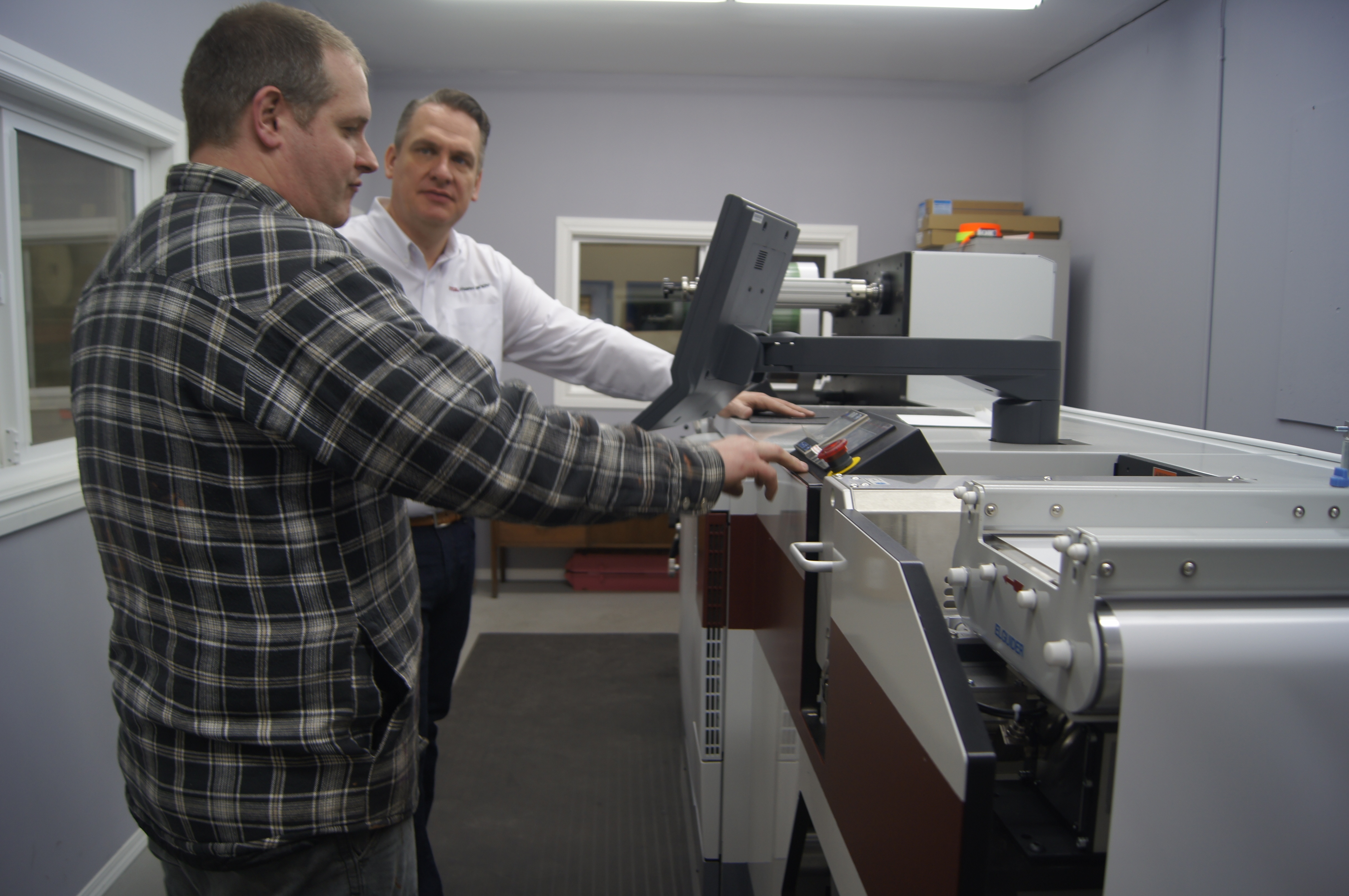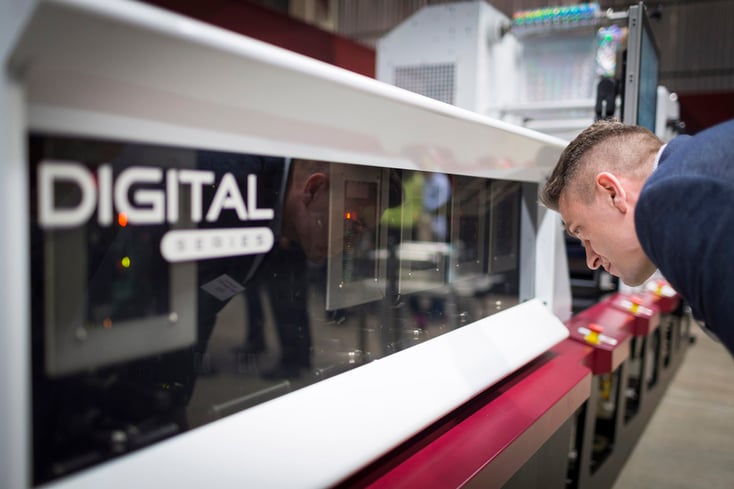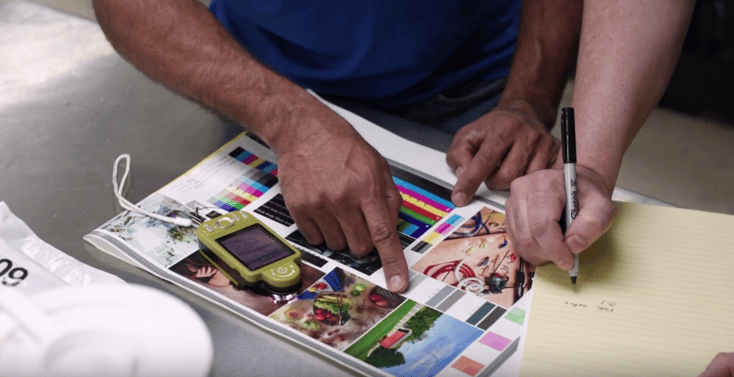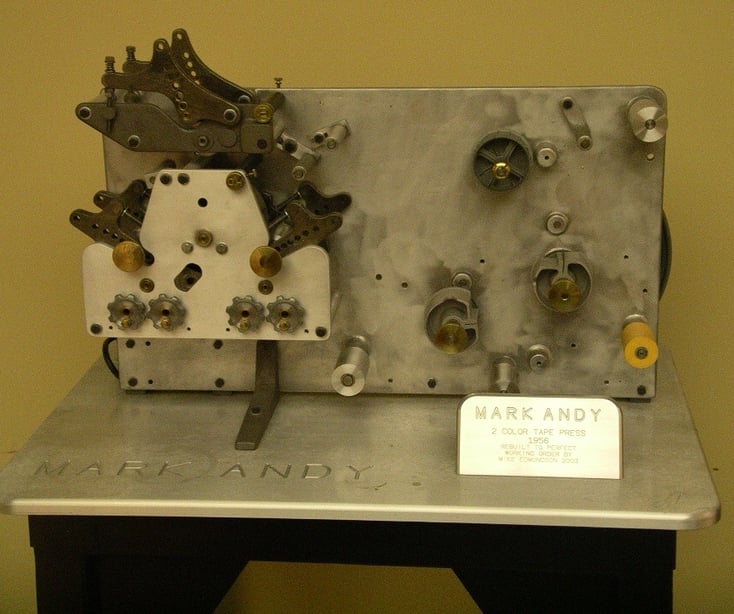5 Digital Technology Myths Debunked
When it comes to adding digital to the mix, there seems to be a few lingering misconceptions about the technology. Because of this, conventional label converters have a lot of questions.
Should the device be roll-to-roll or provide finishing in-line? What’s the deal with digital white? Does the device unlock decorative potential? Ultimately, everyone is wondering what company they should partner with and who is going to guide them the right way.
Amidst all the buzz, we want to set the record straight when it comes to digital label presses. Below you will find five digital technology myths debunked. While it’s not everything you’ll need to know when considering a digital, clearing the air and having the facts about digital hybrid technology will help you make the right decision when choosing a partner or new pressroom asset.
Myth 1: It’s Hard to Run a Digital Printing Press
Some business owners have a hard time investing in a new digital technology because there is a preconceived notion of a substantial learning curve for their operators. Luckily, the digital hybrids brought to market in the last few years are built upon well-established flexo platforms. This makes it easy for printers to transfer over skills developed while manning traditional machines, minimizing downtime associated with training and getting operators up to speed.
 Mark Andy University provides extensive training programs to support any converter and every skill level.
Mark Andy University provides extensive training programs to support any converter and every skill level.
Speaking of easy operation, entry-level digital printing and converting options, such as the Mark Andy Digital One, make printing labels as simple as the push of a button. Equipped with flexo fundamentals, operators are able to jump right in and run the press after as little as 2 hours of training.
Myth 2: You Need Lots of New Business to Fill a Digital Hybrid Press
Many converters think that they need to win an entirely new book of business to support a digital asset. The truth is that there probably are dozens of jobs currently run on a flexo label press that just make more sense to be run digitally. Migrating smaller, complex jobs over to a hybrid ensures your flexo favorites are running work that makes the most sense, optimizing your job mix and improving your bottom line.
Mark Andy offers the broadest portfolio of modular digital hybrid solutions to support the varied and ever-changing needs and business size of our customers. From an approachable standalone, to a highly configurable production asset, or even flexible retrofits, there is a digital configuration for every business and budget.
Myth 3: In-Line Converting Does Not Add Value
In the past we saw flexo beat out offset and gravure processes because of in-line functionality. Today, this dominance is still evident and continues to be relevant with flexo and digital hybrid workflows.
 In-line converting provides an increase in uptime for many businesses.
In-line converting provides an increase in uptime for many businesses.
In minutes, blank rolls of material put on the press are transformed into finely crafted labels and packaging ready to be sent to customers. The efficiency and time savings of in-line converting and finishing just makes sense with a digital label press.
Digital label presses by nature coincide with faster turnaround times and shorter runs. How can you truly leverage the benefits of digital with a multi-platform workflow? Hybrid technology streamlines the overall process, providing everything needed to get a job out the door in a single pass with a single machine. Can it get any better than that?
Myth 4: Traditional 4 Color Process Can Be Limiting
It seems fitting that myth number four address 4 color, CMYK printing process. Many people perceive expanded gamut as the end all be all of print, but in reality digital converters can hit a high percentage of PANTONE colors on white BOPP with traditional CMYK process. That’s thousands and thousands of shade variations at your disposal!

Add on the digital white capabilities available with full-production digital print technology and affordable advanced metallic decoration enabled by Color-Logic software and the market is well equipped to maintain brand color consistency and offer virtually limitless options to their customers.
Unlike strictly digital devices, hybrids can also utilize flexo spot colors for hard to match custom shades, proving the robust nature of the equipment and its’ ability to meet brand owner’s demands.
Myth 5: Label Press Manufacturers Don’t Specialize in Digital
Did you know our founder, Mark Andrews, actually built the first modern tape press in his garage? With his ingenuity and innovation at the core of Mark Andy, our staff maintains a deep understanding of flexographic printing and our equipment excels in the art of web handling, but that only scratches the surface of what Mark Andy, traditionally a flexo press manufacturer, is capable of doing.
 Mark Andy’s first innovation was a 1956 tape press built by founder, Mark Andrews in Kirkwood, MO.
Mark Andy’s first innovation was a 1956 tape press built by founder, Mark Andrews in Kirkwood, MO.
In recent years, our team of experts has helped transform the industry and the modern face of flexo through advancements in our hybrid portfolio.
Hybrids balance the best of both worlds: a trusted flexographic platform and award winning digital print system. Digital hybrids are an evolution of flexo success and the optimal solution for increasing demands for shorter run lengths.
Closing Thoughts
With over 70 digital hybrid press sales worldwide, Mark Andy is proud to be leading the way in helping converters understand the digital evolution.
There is no denying flexography has a stable place in the industry, but the future of flexo isn’t the humble tape press from our infancy, rather the intuitive digital hybrids engineered in the last few years.
As a print provider, labeling and packaging is what you live and breathe every day. Instead of getting hung up on the technical nuances of digital print, it’s key to understand true value lies in the final product; high-quality output that is printed, converted and finished profitably in a single pass.